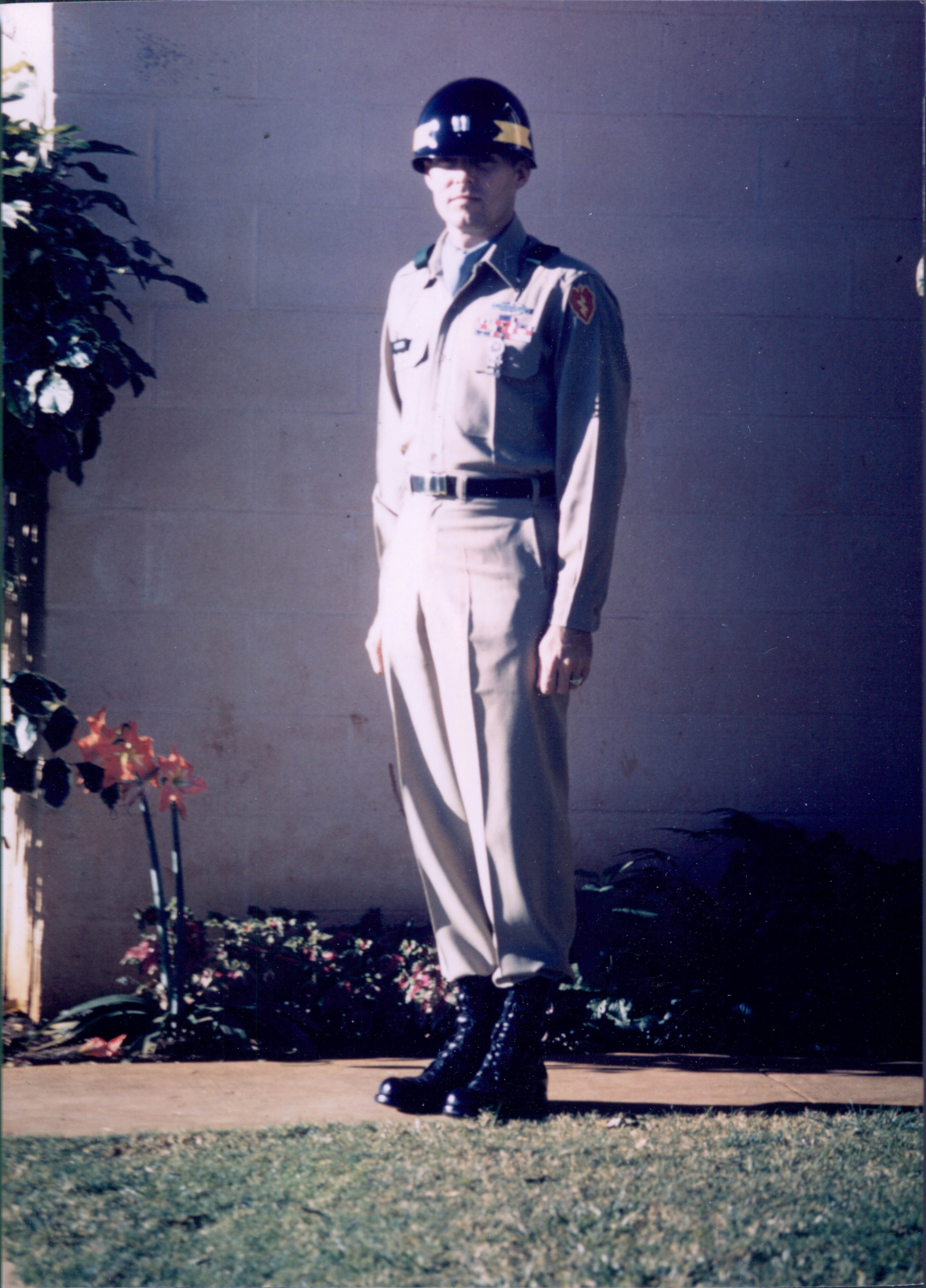So my orders sent me to the 25th Infantry - the Tropic Lightning - Division stationed at Schofield Barracks on the island of Oahu.
The next three years would prove to be interesting for a number of reasons. Firstly I would serve in a new type of combat organization, formed in 1957 while I was at West Point, called Battle Groups. That was a substitute for the traditional Army Regiment - smaller, more nimble, and designed to be able to fight more effectively on the Nuclear-weapons dominated battlefield. Especially on the Plains of Europe.
It was called the 'Pentomic Army Structure ' and the 25th Division was organized as a Pentomic Division.
The standard infantry division, with three Regiments, each with 3 Battalions was seen as being too clumsy in its fixed organization.
So in the Pentomic structure units were organized in a system of "5's". A Division was organized with five "battle groups", each commanded by a colonel. Each battle group consisted of five line (rifle) companies, a combat support company, and a Headquarters company. Each company was commanded by a captain.
Artillery battalions were organized with five batteries—four were howitzers, the fifth was a mortar battery. The addition of small "Davy Crockett" weapons with atomic warheads brought the army into the nuclear age.
One problem that gave the Army was that without traditional Regiments whose lineage went back to the Revolutionary War, there had to be a way to preserve the traditions. So, while the 25th Infantry Division, almost always stationed in the Pacific - the 'Tropic Lightning" Division, its Battle Groups were given traditional names.
I was first assigned to the 35th Infantry- 'Cacti' Battle Group.

The 35th Infantry Regiment was formed in Arizona in 1916 - thus the 'Cacti' Regiment. It was formed from units who had fought Pancho Villa along the Mexican Border under General John J Pershing, around 1915.
I was assigned - for only several months - as the Commander of Company "B" of the Cacti Battle Group. All I remember during that period was that we did a fair amount of field training in the highly restricted areas of Oahu.
And I had to attend, with other company grade officers, classified instructions on how to operate against European style enemy forces, while we were supported by small, recoilless-launched ''Davy Crockett' nuclear weapons which would generate a 10 to 20 Ton of TNT explosion. Or under the 8 Inch artillery Division-level nuclear round fires.
NCO Academy
Then, probably because of my combat record as a junior officer in the Korean War, and having gone through spit and polish West Point, I was selected to command the 25th Division's 'NCO Academy'
 |
Now NCO Acadamies have often been created at the Division level by commanders. They are not standard Army Units, but they serve a useful service in teaching NCOs, usually at the E-5 to E-6 level a wide variety of skills, coupled with 'leadership training'. The NCO's came from all types of Divisional units - infantry, artillery, armor.
It was a very independent small command for me - with 3 officers, and about 14 crackerjack NCO's as the Cadre. Which taught about 100 NCO students for six week long 'courses' with the greatest stress on 'leadership' as exercised during operations, physical fitness and with emphasis of spit-and-polish appearance while in uniforms. They then graduated in a ceremony and got a letter in their file showing they had attended and graduated satisfactorily. A feather in their promotion file.
 |
It was there that a Notre Dame outstanding ROTC Graduate, Lt Burt Lesh, was assigned to my Academy. For the year I commanded the NCO Academy, he and his wife got to know Patsy and I and 12 years later while I was a Brigade Commander he became one of my Battalion Commanders.
One of my other officers was, in his normal unit, a loser. He was sent to me, I suppose, to straighten him out - while yet he was one of my officers who was supposed to be providing a 'model' for the NCOs. He was ok, but surprisingly impractical. When time for me to fill out his efficiency report, I gave him some mild credit and said he was a 'late bloomer.' To my surprise, the Assistant Division Commander of the 25th - Brigadier General Vernon Mock - who was the 'endorsing' officer to my 'rating officer' comments took issue with that phrase - saying that 'late bloomer' only really could be applied to much older officers.
It was not the last time I would run into Mock.